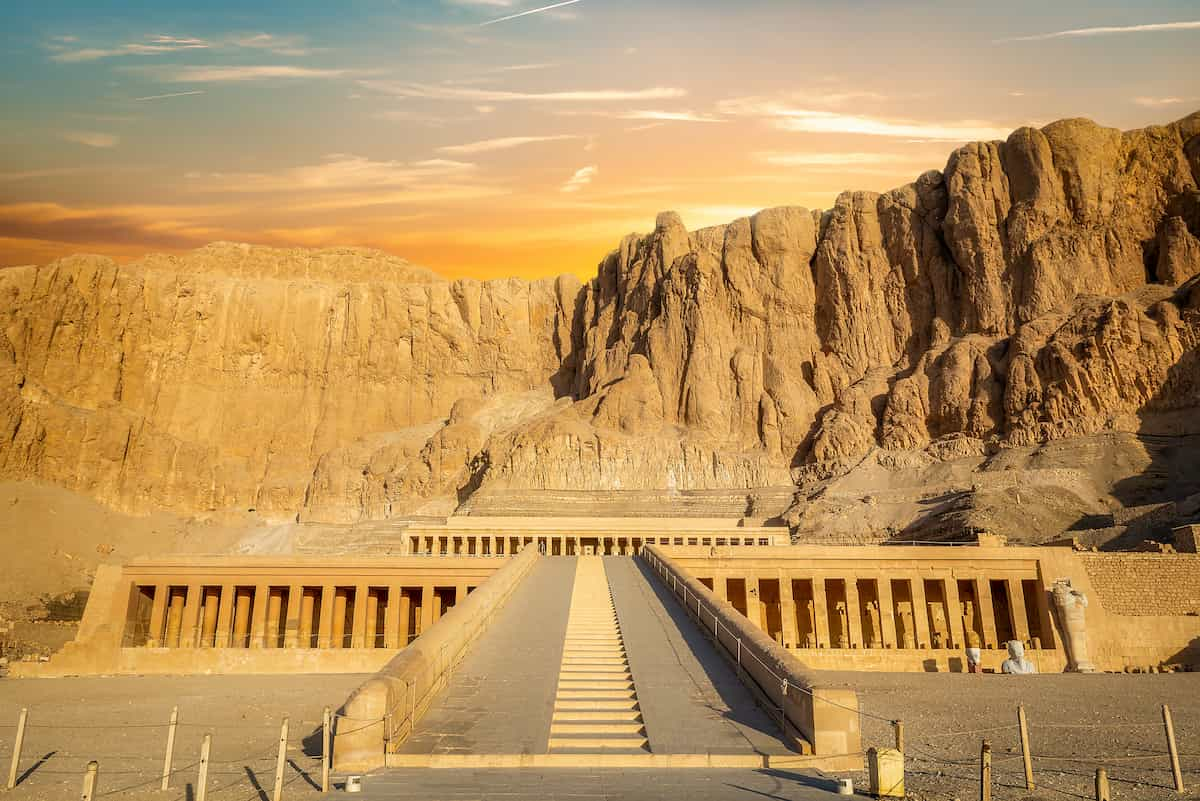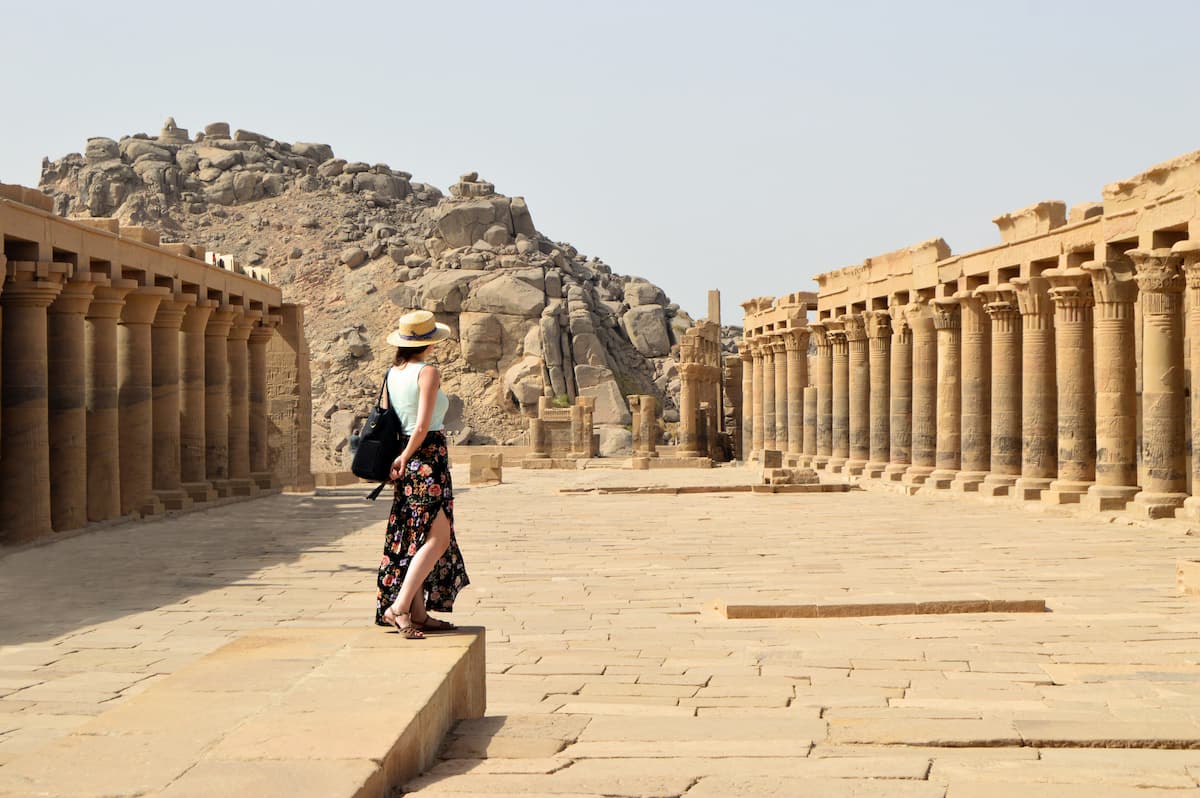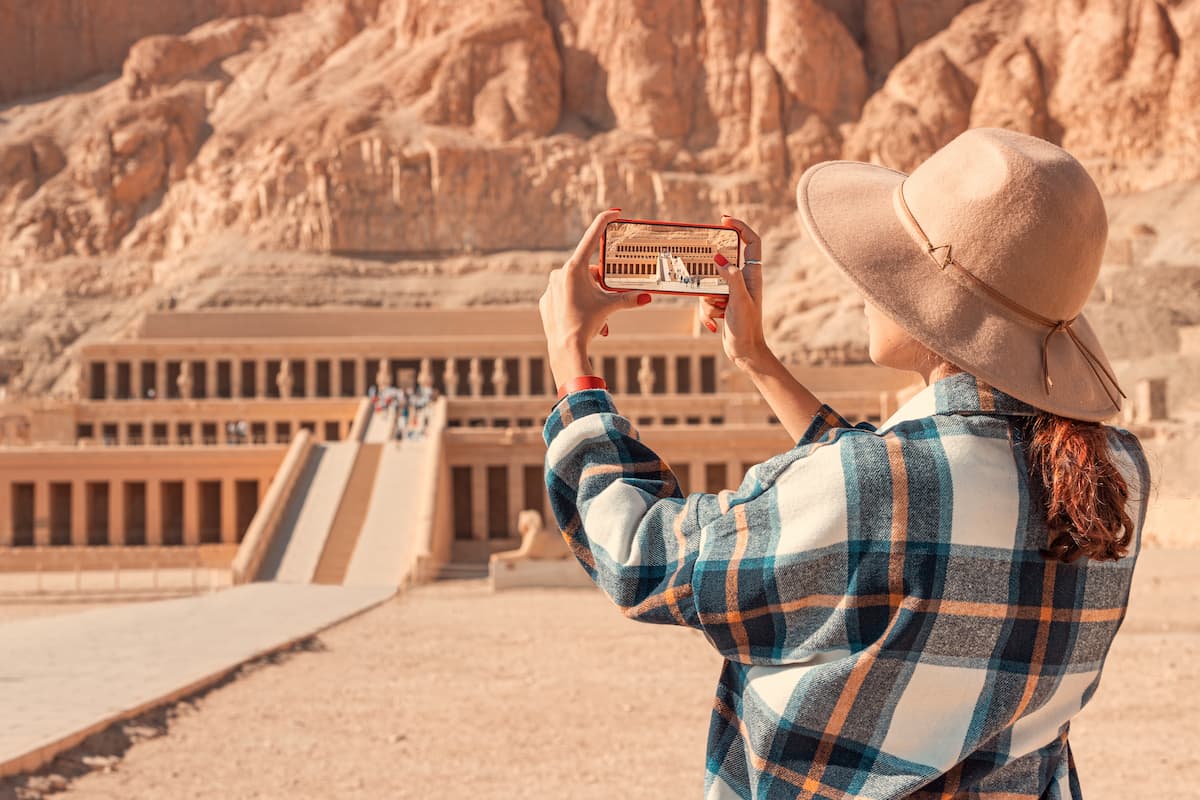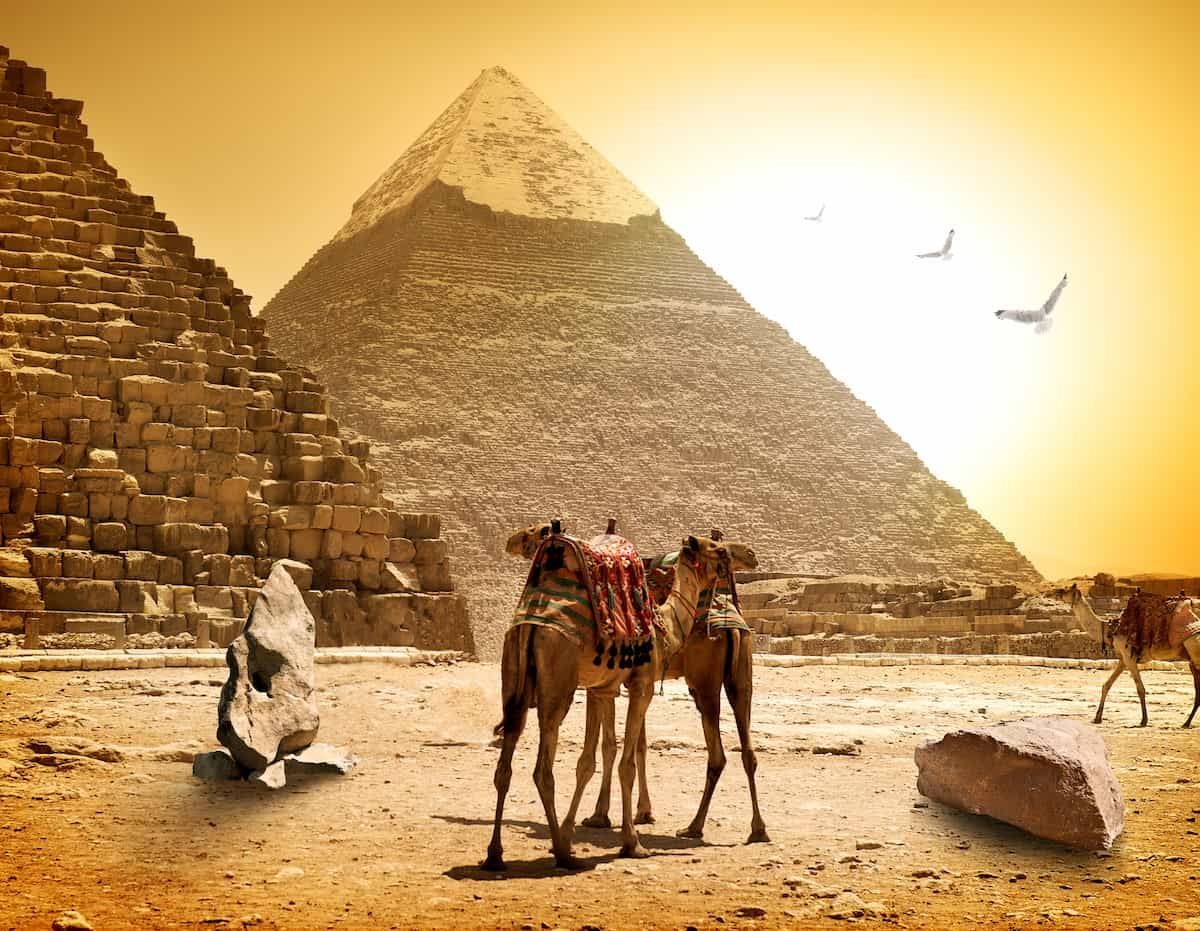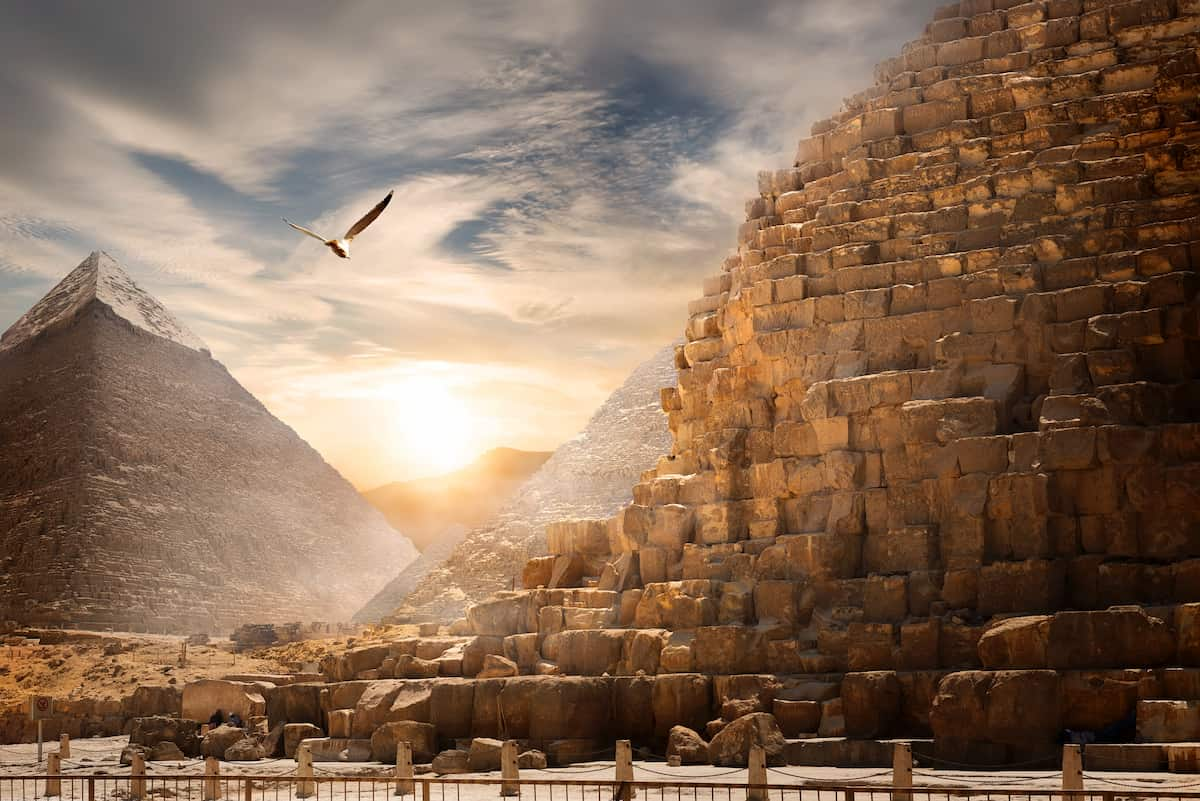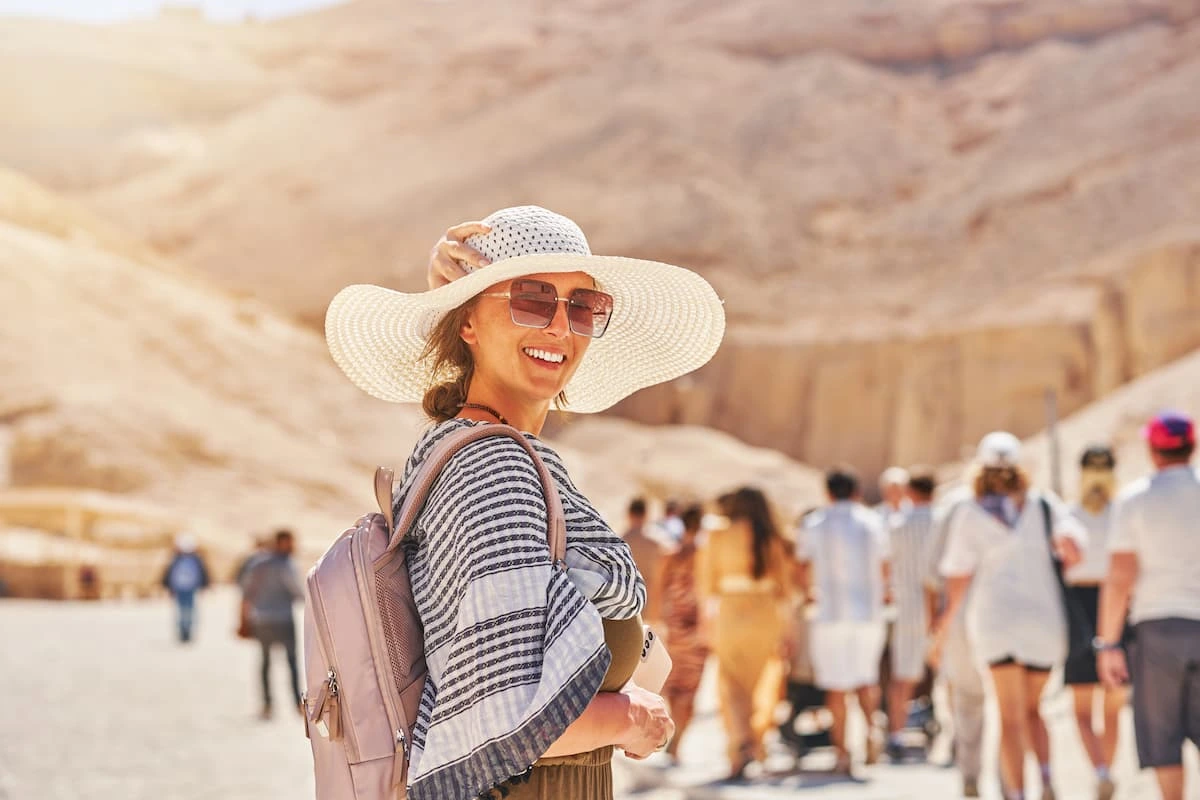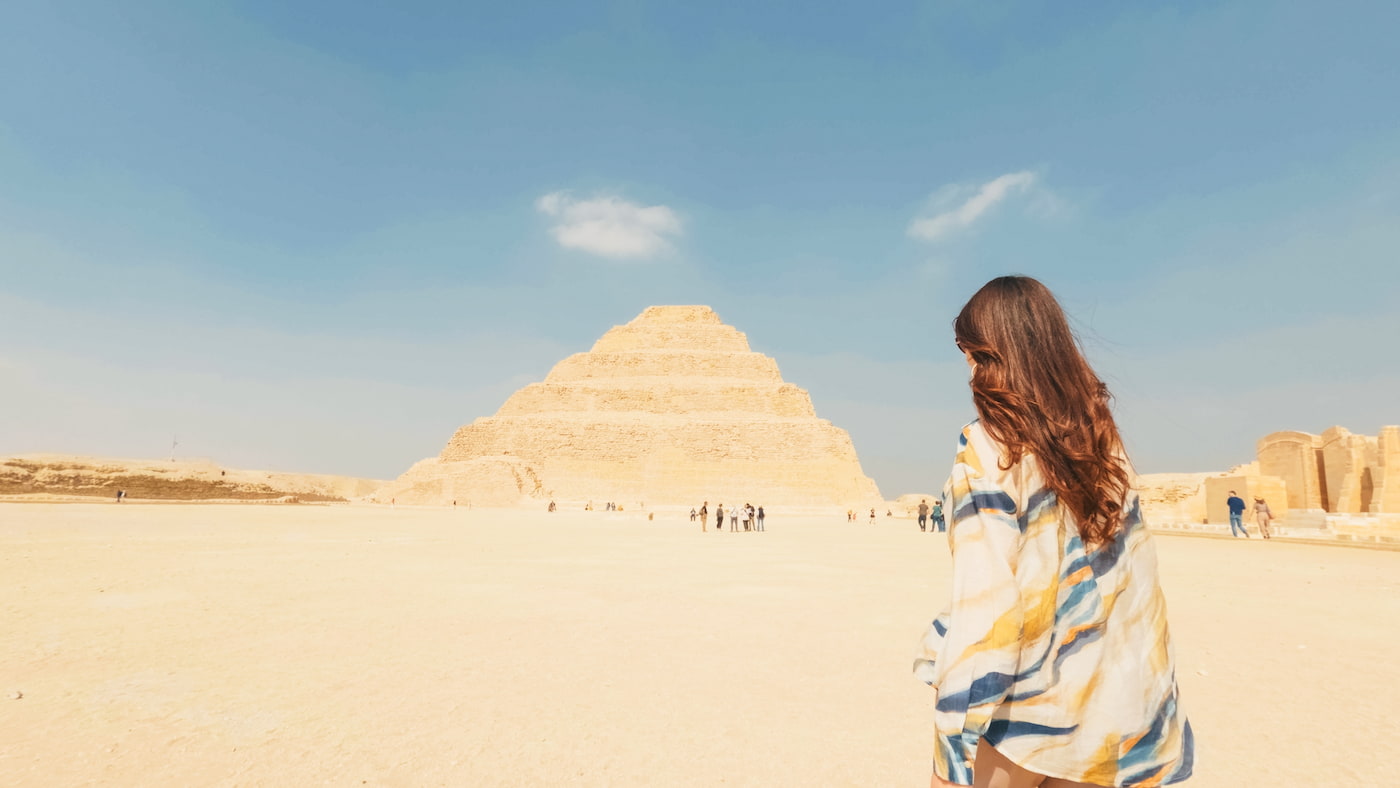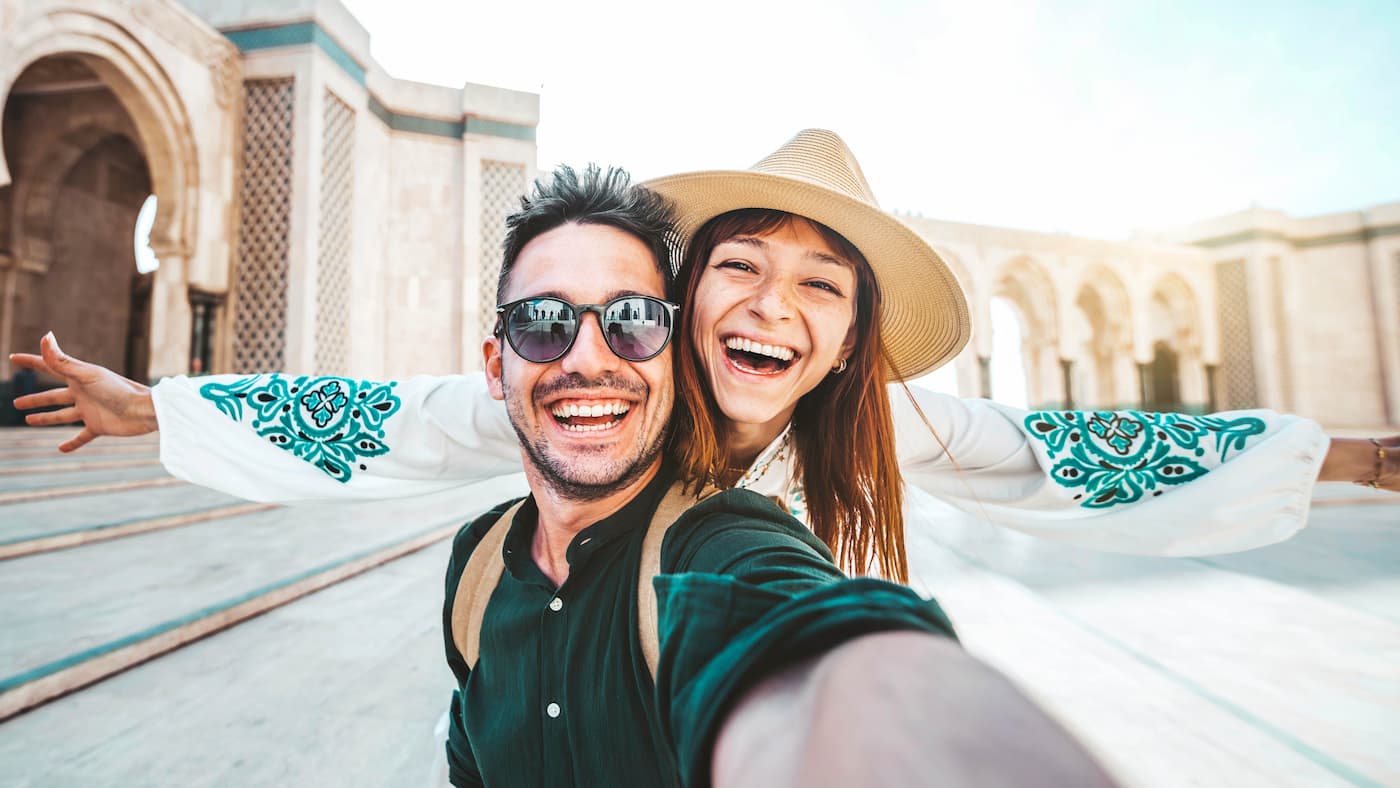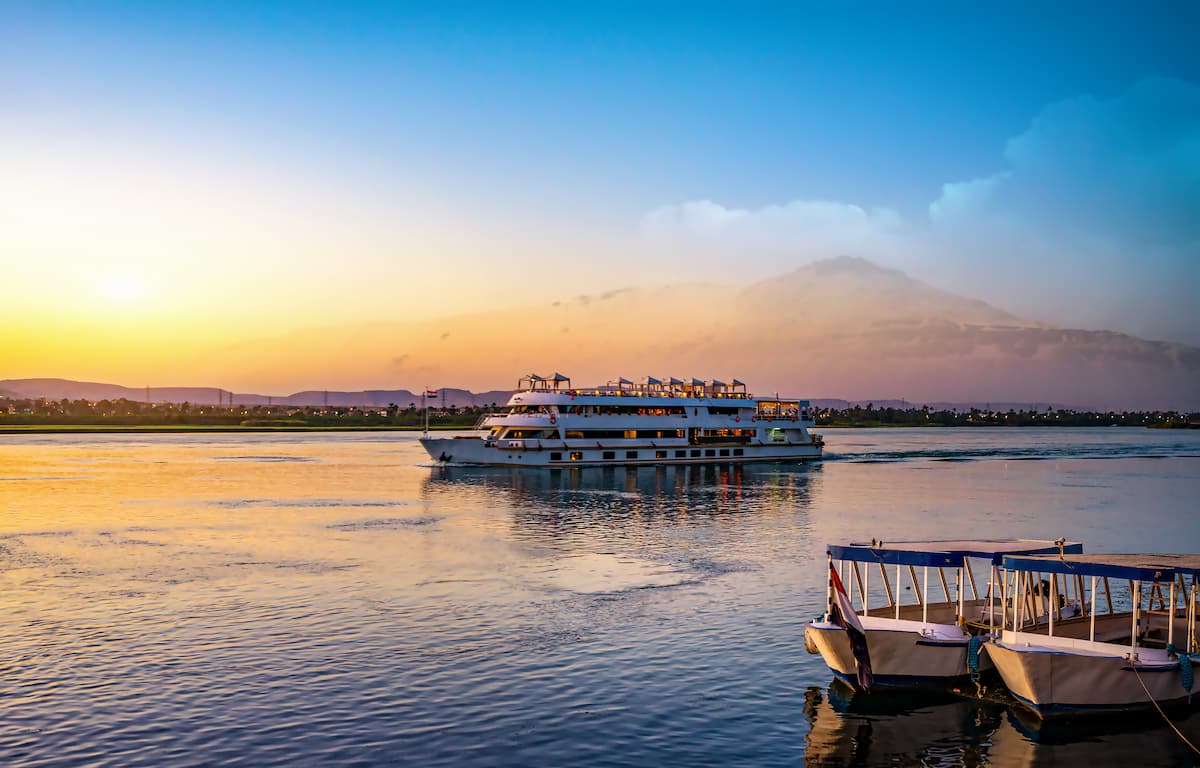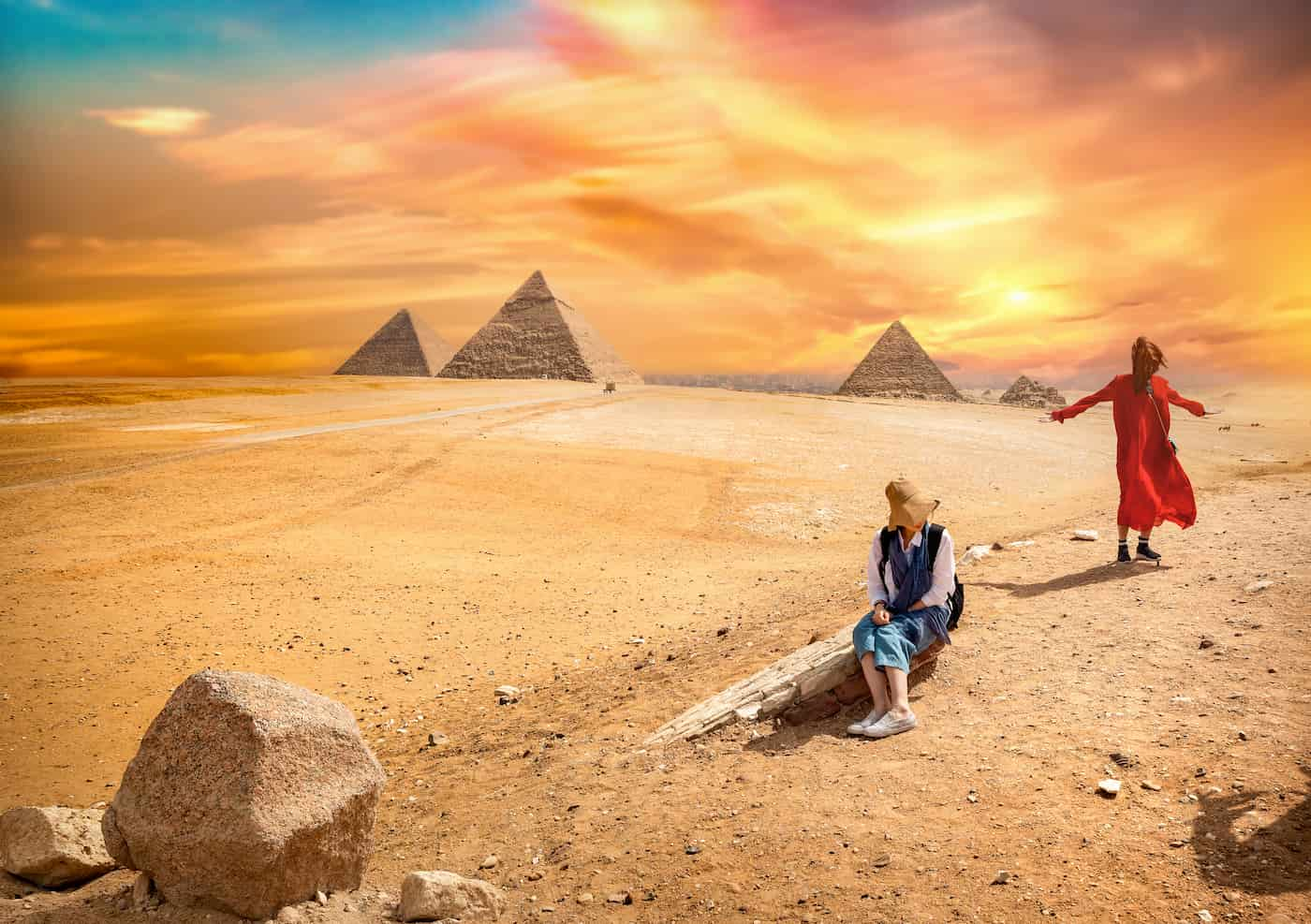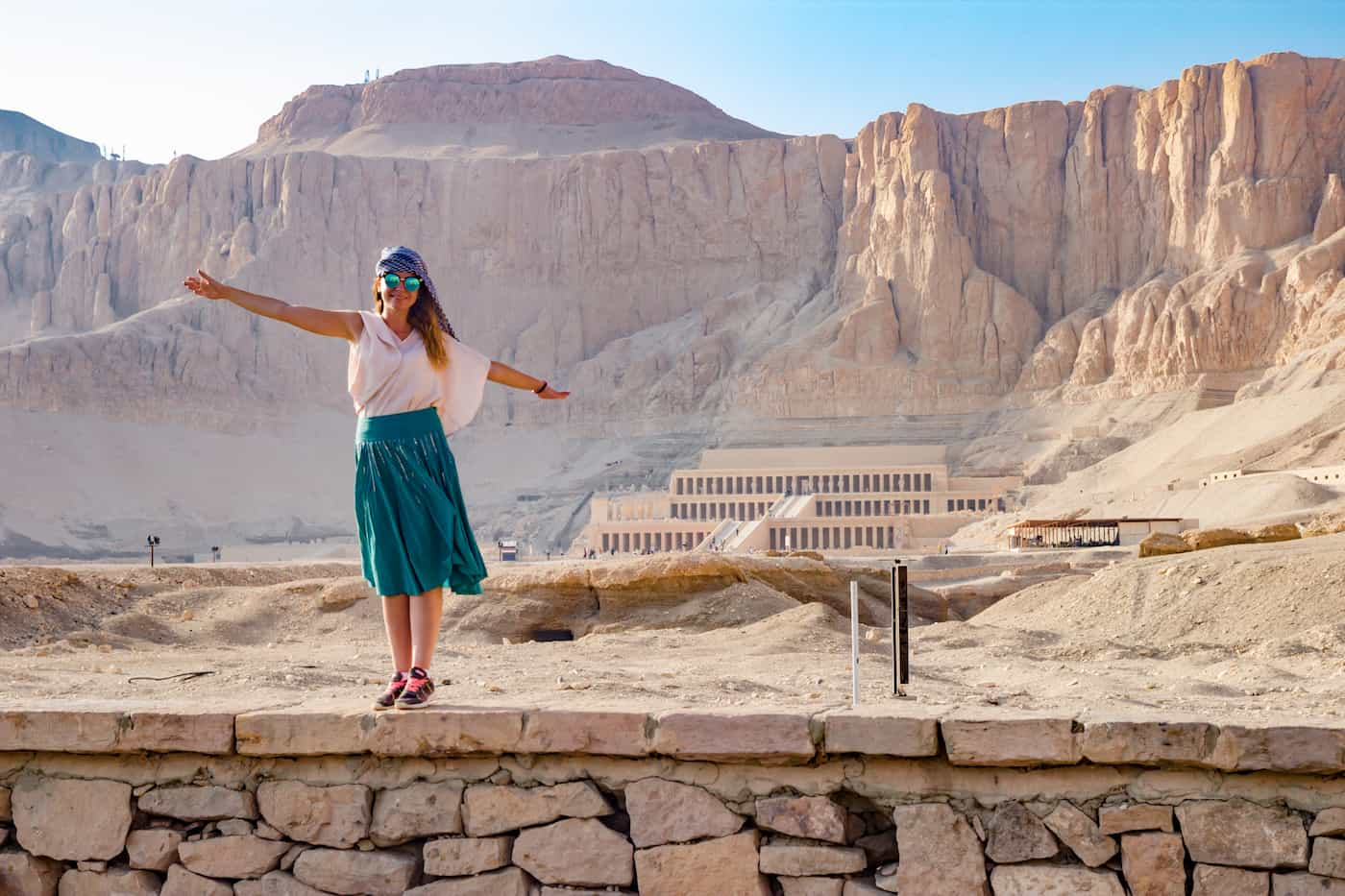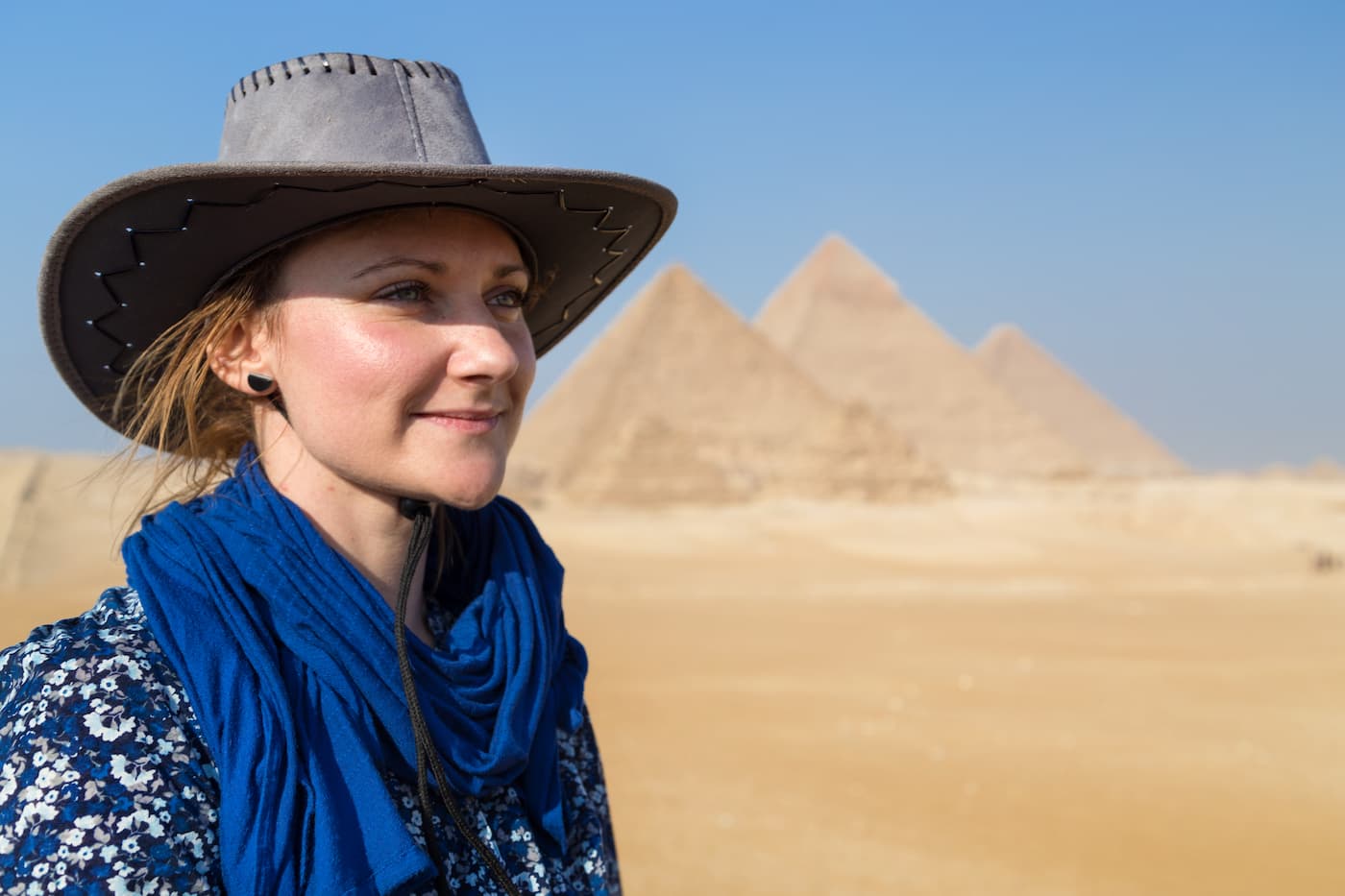Luxor and the Valley of the Kings. Luxor is a city in the southern part of Egypt. Moreover, it sits on the east bank of the River Nile. Luxor is steeped in ancient historical past and culture. It is known as the world’s most excellent open-air museum. In addition, it is home to some truly stunning archaeological sites that show off a little of what history has to offer from the Egyptians. From magnificent temples like Karnak and Luxor to the museum treasure that runs along the streets, everything here screams history, tradition, and heritage and is a gateway to the Valley of the Kings, a vast burial ground for the pharaohs of Egypt‘s New Kingdom, located on the west bank of the Nile, opposite the city of Luxor, and the tombs that lie within.
Additionally, the Valley of the Kings is a valley in Luxor, Egypt. It was used for 500 years between the 16th and 11th centuries BC. Moreover, it constructed tombs for the pharaohs and nobles of the ancient New Kingdom (the 18th to 20th dynasties of ancient Egypt). Furthermore, the valley lies on the west bank of the Nile River opposite Thebes (modern-day Luxor) in the heart of the ancient mortuary city of Thebes. The Valley of the Kings is divided into the Eastern Valley (where most royal tombs are located) and the Western Valley.
1. Luxor, Egypt The Ancient City on the Nile For Valley of the Kings
The ancient city of Luxor, also known as the city of the Sun, was formerly known as Thebes. Moreover, It was the capital of Egypt in the Pharaonic era. Furthermore, it is located on the banks of the Nile River, which divides it into two parts: the eastern and western banks. It is the capital of Luxor Governorate in southern Egypt. Moreover, it is about 670 km from the Egyptian capital, Cairo, about 220 km north of Aswan, 56 km south of Qena, and 280 km southwest of Hurghada. It is bordered to the north by Qus Center and Qena Governorate, to the south by Edfu Center and Aswan Governorate, to the east by the Red Sea Governorate, and to the west by Armant Center and New Valley Governorate. The nearest seaport to the city is Safaga Port, and the nearest airport to it is Luxor International Airport.
The city of Thebes, Egypt, was founded in the era of the Fourth Dynasty around 2575 BC, and until the Middle Kingdom, Thebes was nothing more than a group of simple, adjacent huts. However, it was used as a cemetery for burying the dead, as the governors of the provinces were buried there from the era of the Old Kingdom and beyond. The city of Thebes later became the capital of Egypt in the era of the Eleventh Egyptian Dynasty at the hands of Pharaoh Mentuhotep I, who succeeded in unifying the country again after the state of chaos that prevailed in Egypt in the first era of decline. The city of Thebes remained the capital of the Egyptian state until the fall of the rule of the pharaohs and the Thirty-First Dynasty at the hands of the Persians in 332 BC.
– The Reason Behind The Naming of Luxor As We Know It Now
Luxor was known throughout the different ages by many names; in its beginning, it was called the city of “Waset,” then the Romans called it “Thebes,” and it was also called the city of the hundred gates, as described by the Greek poet Homer in the Iliad. It was also called the “City of the Sun,” “City of Light,” and “City of the Scepter.” After the Arab conquest of Egypt, the Arabs called it “Luxor,” the plural form of the word palace, as the city contained many of the pharaohs’ palaces. The foundation of the city of Thebes dates back to the Fourth Dynasty, around 2575 BC.
2. History of Luxor, Eygpt The Ancient City of Vally of The Kings
Thebes is an ancient pharaonic museum city in Upper Egypt and one of the capitals of ancient Egypt during the Middle Kingdom and New Kingdoms. Moreover, Thebes (Luxor today) was the center of the worship of Ra, and most of Egypt’s pharaohs, especially during the New Kingdom, built temples there for various ancient Egyptian gods, the most important being Amun-Ra. Thebes is located on the east bank of the Nile and was the pharaoh’s capital, temple, and palace, with a mayor throughout the ages.
The temples, including the House of a Million Years, were built of heavy stones, while the palaces and homes were made of mud bricks, which did not endure. This is why temples remain while palaces have vanished. The ancient Egyptians saw Thebes and the eastern bank as the abode of life, with its temples, while the west was the abode of death, where tombs like the Valley of the Kings were constructed. Prominent temples like Karnak were on the eastern bank.
The city of Thebes has about 14 of the most important Egyptian temples and is now called Luxor. One of the most famous monuments on the east bank of the Nile is the Colonnade of Columns at Karnak, which witnessed many modifications over the centuries by various pharaohs such as Hatshepsut, Thutmose III, Ramses II, and others. Also, the Luxor Temple, built by Ramses II, is worth visiting.
– The Temples and Tombs of Ancient Thebes From Vally of King to Other Wonders
The main gate of Karnak Temple is located at its northern end. In front of it were two obelisks, one of which was taken to Paris, France, in 1836 and adorns Concorde Square there. At the city’s northern end, the Karnak temple complex was built over 1500 years ago, becoming the most significant religious facility in the world. It is famous for its 134 large colonnades and artificial lakes from the time of the pharaohs.
Between Luxor and Karnak are the Road of the Ram and other temples. On the west bank of the Nile was the Land of the Dead, where there were funerary temples and hundreds of tombs. One of the largest and most famous funerary temples is the Ramesseum Temple of Ramses II, dating back to the 19th Dynasty, with a colossal statue in its ruins. On the west bank are the Valley of the Kings, Valley of the Queens, and Deir el-Medina, the city of the laborers who built the tombs of the pharaohs near them.
The funerary temple of Queen Hatshepsut (Hatshepsut Temple) from the 18th Dynasty in Deir el-Bahri, west of the Nile, is an architectural masterpiece. It was built during the early 15th century BC in a terraced setting on a steep slope. The most famous monuments on the west bank are the Valley of the Kings, where the tomb of King Tutankhamun was found, and the tombs of Thutmose III, Ramses III, IV, V, Seti I, and the tomb of King Horemheb, whose walls are depicted in relief.
3. The Transportation Luxor, Egypt Tours and Travel
– Traveling to Luxor By Air
Luxor International Airport, located 6 kilometers east of the city, serves the city and can receive tourists from all over the world in large numbers (about one million tourists annually). The airport is undergoing continuous development processes commensurate with its essential and distinctive location.
– Traveling to Luxor By The River Through Nile Cruise or Dahabyia
The river transport sector is one of the most essential elements of the transportation system in Luxor, with all its elements, including shipping lines, Nile anchorages, navigation locks, and the waterway’s infrastructure. This system serves tourist floats between Luxor and Aswan and transports barges, sailing boats, and ferries. There are also “river cruises,” which are large boats that transport locals and tourists to and from the eastern and western shores at nominal prices, and small private boats (owned by individuals) for transportation and leisure in the middle of the Nile River. Large cruise ships offering Nile cruises from Cairo to Aswan pass through Luxor’s Nile moorings. This line is also used for transporting goods and allows for the double passage of river units.
– Travelling To Luxor By Land (Land Tours)
Several land axes connect Luxor to the rest of Egypt’s cities and governorates. The northern axes begin by linking with the nearest governorate to Luxor, Qena. From Qena, the axes branch out, connecting east via the Qena/Safaga road to reach the Red Sea and from Safaga to Hurghada, or north via the Qena/Sohag road, then the Sohag/Assiut road, the Assiut road, and the Assiut/Cairo road.
The northern axes pass through the same stations or cities along two desert and agricultural ranges distributed in the east and west: the eastern Upper Egyptian Desert Road, the western Upper Egyptian Desert Road, the Upper Egyptian Agricultural Road, and the Karimat Road. To the south, the eastern and western Upper Egyptian axes link with Aswan.
4. Valley of the Kings: The Eternal Resting Place The Ancient Pharaohs and Queens
With the discovery of the last burial chamber in 2006, known as (Tomb 63), in addition to the discovery of two other entrances to the same chamber in 2008, the number of tombs discovered so far has reached 63 tombs of varying sizes, ranging from a small hole in the ground to a complex tomb containing more than 120 burial chambers inside, in the Valley of the Kings. All of these tombs were used to bury the kings and princes of the New Kingdom in ancient Egypt, in addition to some nobles and those who were related to the ruling family at that time, on the west bank of the Nile, opposite Thebes, near Luxor.
The royal tombs are distinguished by drawings and inscriptions from ancient Egyptian mythology that illustrate the ancient Egyptian beliefs and memorial ceremonies of that time. All of the discovered tombs were opened and looted in ancient times, but despite that, they remain compelling evidence of the power and prosperity of the kings of that time.
– Tombs of the Pharaohs
The Valley of the Kings houses the Tombs of the Pharaohs, echoing the reference grandeur of ancient rulers of Egypt. These were heavily underground tombs, rounded up while hewn out of the limestone hills, and served as the final managers of most kings and queens of the New Kingdom, who regarded a grand burial as a minimum requirement for the successful crossing into the beyond worlds. These tombs are masterpieces of ancient Egyptian architecture featuring cryptic hieroglyphics, vivid paintings, and ornate furniture, which unfolded the wealth and power stored for the pharaohs interred in them.
– Queens of Ancient Egypt
The queen in ancient Egypt was the king’s wife. Although rule in ancient Egypt was passed among males, from father to eldest son, in most cases, if the king did not have a legitimate son and had a legitimate daughter, she had the right to ascend the throne as queen. If she married someone, he would be more entitled to rule than her, starting a new family, and from here, the queens played an essential role in the inheritance of the throne.
However, the queens were vital to the king’s public and private life. The power of the women of the royal court increased significantly during the New Kingdom, in particular, until a woman reached the position of the ruling queen herself, namely Hatshepsut, who assumed power after the death of her brother and husband, King Thutmose II. Although she was not the first to reach this position in Egypt, she was the most influential of the queens who preceded her. In the Old and Middle Kingdoms, the duties of the queen or king’s wife can be summarized in the following points:
Having many children for the king would smoother the succession if there were a son recognized as the legitimate son of the king as the new ruler; in an age like this, people had short life spans, which required the king to have as many children as possible to succeed him and each other when one of them died.
- Ensuring the proper functioning of the Royal Palace and supervising every significant and small thing in it.
- When necessary, serving as regent for the throne if the king’s son was not old enough to rule alone.
- Providing support and advice to the husband in private.
- Completing the image of the king in front of the public.
– List of The Most well Known Queens of Ancient Egypt
- Hatshepsut: One of the most successful pharaohs of all time, Hatshepsut was a female pharaoh who ruled Egypt during the 15th century BC.
- Cleopatra: The last pharaoh of Ancient Egypt, Cleopatra was a member of the Ptolemaic dynasty and ruled Egypt from 51 BC until she died in 30 BC.
- Nefertiti: The queen of Egypt during the 14th century BC, Nefertiti was the wife of Pharaoh Akhenaten and is known for her stunning beauty and influential role in ancient Egyptian politics.
- Tawosret: A female pharaoh who ruled Egypt during the 12th century BC, Tawosret is known for her military campaigns and efforts to restore Egypt’s wealth and power.
- Sobekneferu: A female pharaoh who ruled Egypt during the 12th century BC, Sobekneferu is known for her efforts to restore Egypt’s economy and her military campaigns.
- Ahmose-Nefertari: The queen of Egypt during the 16th century BC, Ahmose-Nefertari was the wife of Pharaoh Ahmose I and is known for her influential role in ancient Egyptian politics.
- Tiye: The queen of Egypt during the 14th century BC, Tiye was the wife of Pharaoh Amenhotep III and is known for her influential role in ancient Egyptian politics.
- Meritamen: The daughter of Pharaoh Ramses II and the wife of Pharaoh Seti II, Meritamen is known for her beautiful tomb and her influential role in ancient Egyptian politics.
5. The Road To Valley of The Kings And How to Get There
The Valley of the Kings is a narrow, closed valley located on the west bank of the Nile, behind the rocks of Mount Thebes (Luxor). Geographically, it is a shallow ravine surrounded by highlands and resembles a large, irregularly shaped hole in the middle of the highlands of the western plateau in Egypt. It also faces the Karnak Temples, about three kilometers away, on the eastern side. This ancient site is home to many tombs of kings and nobles and is a testament to the rich ancient history of Egypt.
After crossing the Nile, the road leading to the Valley of the Kings from Luxor is a long road that cuts through the plain, passing by the Temple of Seti I in the village of Qurna. Then, it bends west on a curvy rocky highway that cuts through the hills. The length of this road is about 5 kilometers.
6. Why Pharaohs Choose this Valley to Became Their Eternal Resting Place
The story of choosing this valley as a place for the burial of kings is worth telling, as Thutmose I (1540-1501 BC), the third pharaoh of the eighteenth dynasty, wanted to choose his tomb in a secluded valley behind the rocks of Thebes to preserve his body and maintain it from being extended to the hands of thieves, so he entrusted the engineer Anini to choose this place for him. Anini did not fail to refer to this task, which was entrusted to him by his king, in the texts he wrote on his tomb: “I supervised alone the selection of the rock tomb of His Majesty King Thutmose I, without anyone seeing or hearing me.”
7. Where Did the Egyptians Bury Their Bodies?
The ancient Egyptians believed in immortality, and their means of achieving this was to take care of their dead and prepare places for burial, taking pains to choose them and sparing no effort in bringing huge coffin stones from far away.
From time immemorial until the pre-dynastic era, ancient Egyptians chose their tombs on the edge of the desert, away from the agricultural land of the valley that is flooded annually, or on rocky hillsides to be out of reach of thieves and tamers and to be away from natural mortality factors such as humidity, which decomposes and destroys. This was the case in Luxor, on the west bank of the Nile, where the Valley of the Kings is located, near Thebes.
8. The Burial Methods in the Ancient Times
As the pharaoh kings began to reign, the burial method remained the same, with little change: burial on the sandy ledge or at the foot of mountainous places. After the tomb became more significant, it became seven meters long and five meters wide, and the pit’s depth became three meters. They also built the sides of the pit with mud bricks and then covered them with log beams, supported by other wood beams, to prevent the sand from collapsing.
As for the kings, their tombs did not differ from the tombs of individuals except for the large size, the construction of the floor of the pit with “adobe” bricks, the construction of a staircase connecting the floor of the tomb to the ground surface, and the spread of side rooms as storage for food, funerary furniture, decorative and hunting tools, and weapons of war, and finally a plaque bearing the name of the king buried in the tomb, in Luxor, on the west bank of the Nile, in the Valley of the Kings, Egypt.
9. How The Mummy Transferred to its Tomb After Mummification Process
After the mummification ceremony, the mummy is transferred to the tomb in a grand ceremony. Drawings detailing the funeral procession decorate the walls of the royal tombs. The procession begins with a group of the deceased king’s close associates and servants carrying flowers, perfume pots, and essential oils. They are followed by a group of senior priests and clerics carrying bottles of holy water. Then comes the coffin surrounded by senior clerics carrying incense burners and pots of perfume and incense.
The queen, the rest of his wives, daughters, female relatives, and acquaintances walk behind the king’s coffin, with their heads tied and their clothes torn. They slap their cheeks and chests without stopping momentarily, while some professional women often enumerate the deceased’s virtues and good deeds. Finally, they carry the coffin on their shoulders and bring it into the tomb door, then gently move it to slide down the descending corridor, whose floor is sprinkled with holy water and sand.
The king’s funeral furniture is then deposited in the tomb, along with his weapons and all the jewelry and clothes he “needs” in the afterlife, and a team of priests quickly arrange the items inside the tomb. The queen may be the last to leave the tomb after placing a farewell bouquet for the king. Finally, the workers close the tomb door and hide it, using pottery tools that they break after finishing their work, and hide in a hole near the burial site.
10. What Are The Most Popular Tourist Activities in Egypt?
1. Karnak & Luxor Temples
The temples of Karnak and Luxor are some of the world’s most remarkable remnants from ancient history. Known, of course, as one of the biggest temple complexes in the world, this is a place that a pharaoh added to over hundreds and hundreds of years, followed by the next. It has four main areas, of which only one, the Amun-Re precinct, has public access. The Luxor temples are magnificent altogether; they constitute an enormously important part of Egypt‘s history since it was on these grounds that many kings crowned the country. This is undoubtedly one of the places where an Egyptian tour cannot be finished without visiting the ancient grounds on which the temples are sited.
These two temples have, perhaps, been the most magnificent leftover remains of all that the ancient world had to offer. Karnak is known as one of the largest temple complexes in the world; it was added over hundreds of years by one pharaoh and then the next. The Karnak complex comprises four completely distinct sections; only one is open for public access: the Amun-Re precinct. The Luxor temples are magnificent and account for a significant part of Egypt‘s history: it was here that many kings crowned themselves.
2. Abu Simbel Temples
Most probably one of the most remarkable ancient Egyptian temples, this gigantic in-the-rock Sun Temple of King Ramses was built in honor of the synonymous King Ramses II. Four enormous statues of the pharaoh are at the entrance, and a guard is mounted hewn into the face of a mountain.
The whole temple was very carefully angled and oriented so that the rays of the sun would fall on it twice annually- on the date of his ascension to the throne (21 February) and on that of his birth (21 October)- and light the very inside chancel of the temple, a testament to the advanced civilization and history of the Egyptians. In a fit of architectural egotism and precision, Ramses II had one hallowed temple in this way, a feat still studied by Egyptologists today. This incredible natural phenomenon will surely provide a most exciting view that has come to be dubbed the Sun Festival of King Ramses II.
3. Dendera
It’s located in northern Upper Egypt, 60 km north of Luxor, and is one of the most intact temple complexes-Dendera. This vast complex is 40,000 square meters and includes temples, chapels, and shrines built over the years. The most splendid feature of Dendera is the Temple of Gods, which is over 2000 years old, with an elaborately ornamented ceiling, a great example of ancient architecture.
4. King Tut in The Egyptian Museum
It was in 1922 that Howard Carter uncovered, intact, the Tomb of Tutankhamun, possibly the most fabulous archaeological discovery ever. Under a New Kingdom more than 3,300 years ago, Tutankhamun lived. Egypt had been the world’s superpower for two centuries, and its royal family lived to the hilt. The magnificent gold funerary mask of King Tutankhamun and the treasures he had been buried with for his journey to the afterlife are now found at the world-famous Egyptian Museum in Cairo. With the completion of the new Grand Egyptian Museum in 2022, this famous mask will be drawing thousands upon thousands of visitors to Cairo for years to come, giving Egypt its best display of artifacts ever, showcasing the country’s rich history and civilization, including the pyramids and the Nile.
5. Pyramids of Giza in Giza
Of the seven wonders of the ancient Greeks, the great Pyramids at Giza are today the sole survivors, perhaps the world’s oldest attraction. By the time these pyramids, known as Cheops, Chephren, and Mycerinus, had been visited by Herodotus, the Greek historian, they were over 2300 years old. Building the pyramids was carried out by a corps of skilled mathematicians, masons, surveyors, and stone cutters. Traditionally believed to have consisted of 100,000 slaves, it was understood that they were to move and lay stones for the largest pyramid, Cheops. However, new evidence, including the discovery of ‘worker villages’ and tombs with afterlife supplies, indicates that the pyramids were built by skilled, paid labor. This shows us how long the Ancient Egyptians were ahead of their time.
6. Valley of the Kings in Luxor
Located in 4,000-year-old Luxor, the Valley of the Kings was studded with some fifty-and-more highly decorated tombs constructed as royal sarcophagus-encased mummies of the mightiest pharaohs awaiting their passage into the afterlife. Among the best-known tombs are those of Seti I, Amenhotep II, and, of course, the tomb of King Tutankhamun. Over 60 opulent and lavish tombs have been discovered on this ancient site. Biban al-Harim, the Valley of the Queens, has no fewer than 75 tombs, of which about two are open. Deir al-Bahri, the famous ground of the Temple of Queen Hatshepsut, rises out of the desert plain by a series of terraces; partly rock-cut, partly freestanding, this is one of the finest and most photographed monuments in Egypt, showcasing the rich history and civilization of the Egyptians.
7. Aswan & Philae Temple
Aswan is also a lovely little town on the banks of the Nile that serves as an embarkation point for a felucca trip downstream to Kom Ombo and perhaps an optional excursion to Abu Simbel, the town laid-back Nubian Aswan, where tourists gush at the high back. It is filled with colorful markets, sweet, spicy smells, ruins of Pharaonic and Roman times, and antiquities fresh from the ancient land of Egypt. Check out Elephantine and Kitchener Island, and you’ll be more than reasonable with sampling how the rest of them live in restaurants along the corniche. Jump on an Egyptian Agelika Island boat to explore the Temple of Isis belonging to the Ptolemaic and Roman periods. The most significant monument on the island is the temple of Isis, which occupies about one-quarter of the island.
8. Cairo
Cairo is one of the most fascinating cities and the starting point of all our tours. You can see a glimpse of the lesser-known and most intriguing suburbs of Cairo on the Backstreets of Cairo tour, exclusive to On The Go at the start of most of our group tours in Egypt. Make sure to grab a bargain at the bustling Khan el Khalili bazaar and enjoy some tea at one of the nearby cafes—great for people-watching. Another key highlight is the magnificent Islamic Citadel of Saladin and Sultan Hassan’s mosque, which is beautifully illuminated at night.
When the Egyptian Grand Museum opens its doors later in 2022, you can add this to the long list of reasons to visit Cairo and explore the rich history and civilization of Ancient Egypt. Stroll along the Nile and imagine the gods of old watching over the city. The Pyramids, of course, are a must-see. Traveling to Egypt on a budget and looking for free things to do in Cairo? Check out our guide!
9. Alexandria
Founded by the legendary Alexander the Great, it is a fascinating city on Egypt’s north coast, lapped by the beautiful Mediterranean Sea. The fact that Alexandria was once home to the Pharos, a lighthouse (despite its collapse) that was one of the seven wonders of the ancient world, is a huge draw for travelers. You might not be able to witness this epic structure nowadays. However, the city is still imbued with its significance, and a trip to the museum will undoubtedly help you get to grips with Alexandria’s cultural history and intriguing past. Traveling from Alexandria back to Cairo.
You could also stop at the site of some of the most brutal battles of the Second World War, El Alamein. It has become a pilgrimage site for people wishing to pay their respects to those lost during the fight. The rows of graves in the various war cemeteries are a permanent reminder of the tragic loss that each country involved sustained. Yet, El Alamein is not just a sad relic of the past; it is the perfect place to appreciate life and its moments of pleasure, especially for Egyptians and those interested in Egyptian culture and the rich civilization that has left behind structures like the pyramids and the Nile.
10. Hurghada
The best beach resort in Egypt after Sharm el-Sheikh, Hurghada, is perfect to round off a cultural trip in Cairo, Aswan, Luxor, and elsewhere. Thanks to hotels and an extended infrastructure, holidaymakers are now provided first-class aquatics facilities for sailing, yachting, deep-sea fishing, SCUBA diving, and snorkeling. Because of its central geographical position, Hurghada is a gateway where thrill-seekers can easily reach the prime offshore reefs, some of the best worldwide. Besides, Hurghada is characterized by a vivid nightlife. For shopping, plenty of stores in town sell copies of handbags, tees, diving masks, and the like. On the outskirts of Hurghada is an ancient Roman quarry, Mons Porphyritic, which is famous for its windiness and is thus said to be one of the best spots for windsurfing; beneath the boundary of Port Safarga, the windy spot is renowned for windsurfing.

